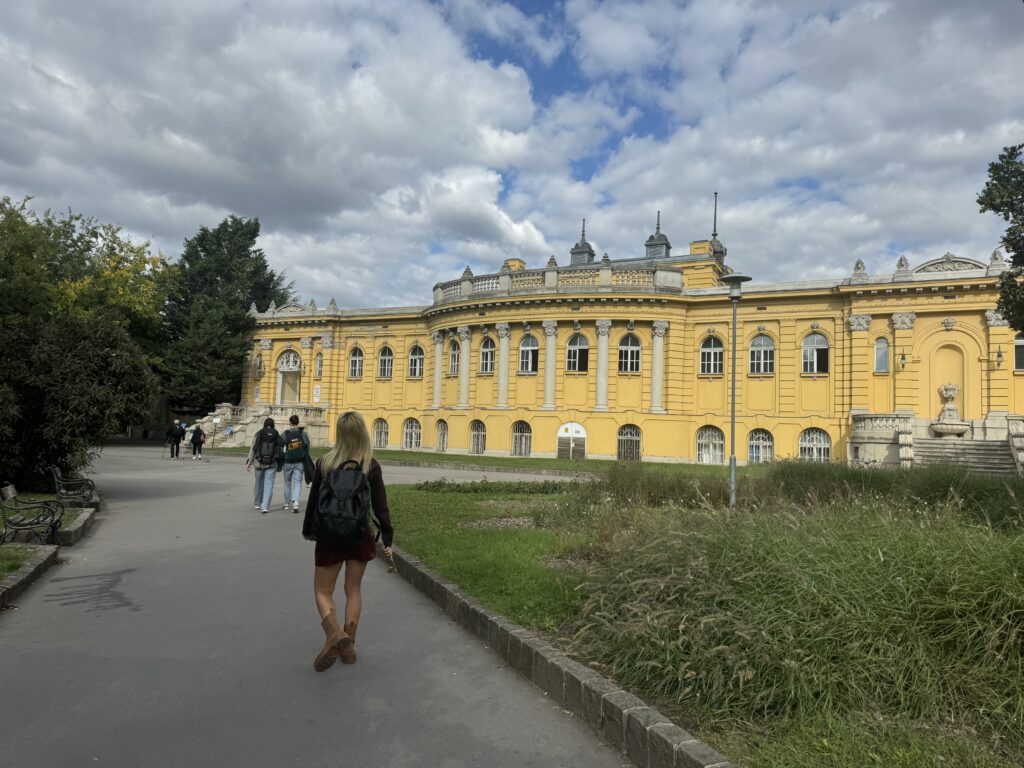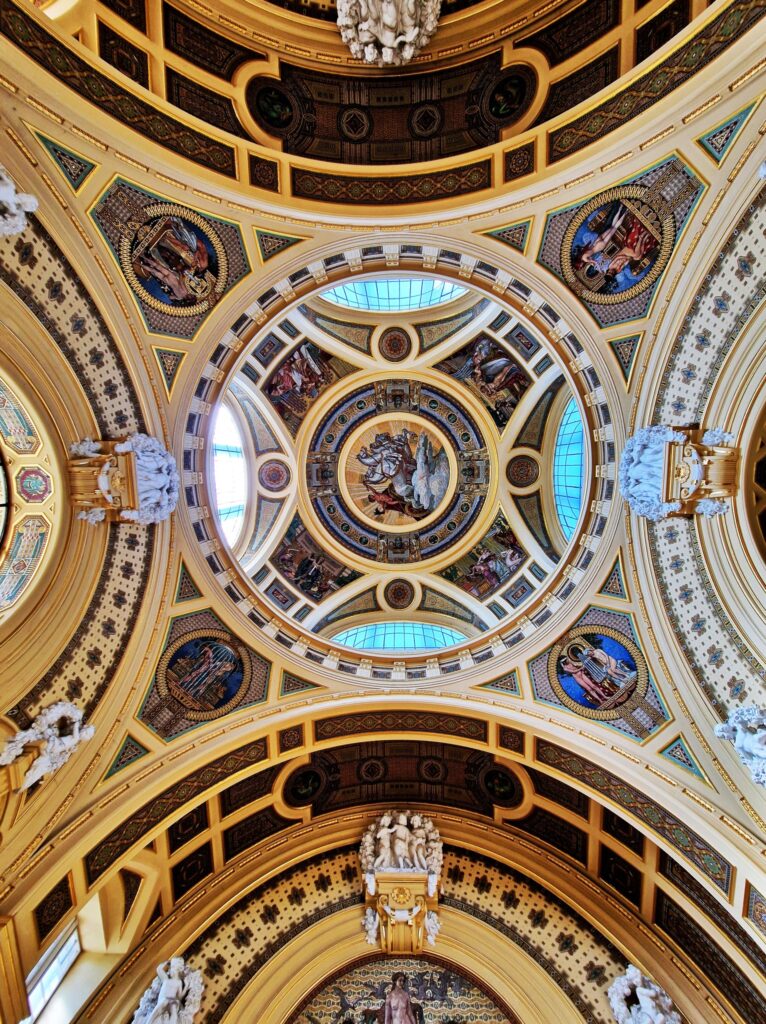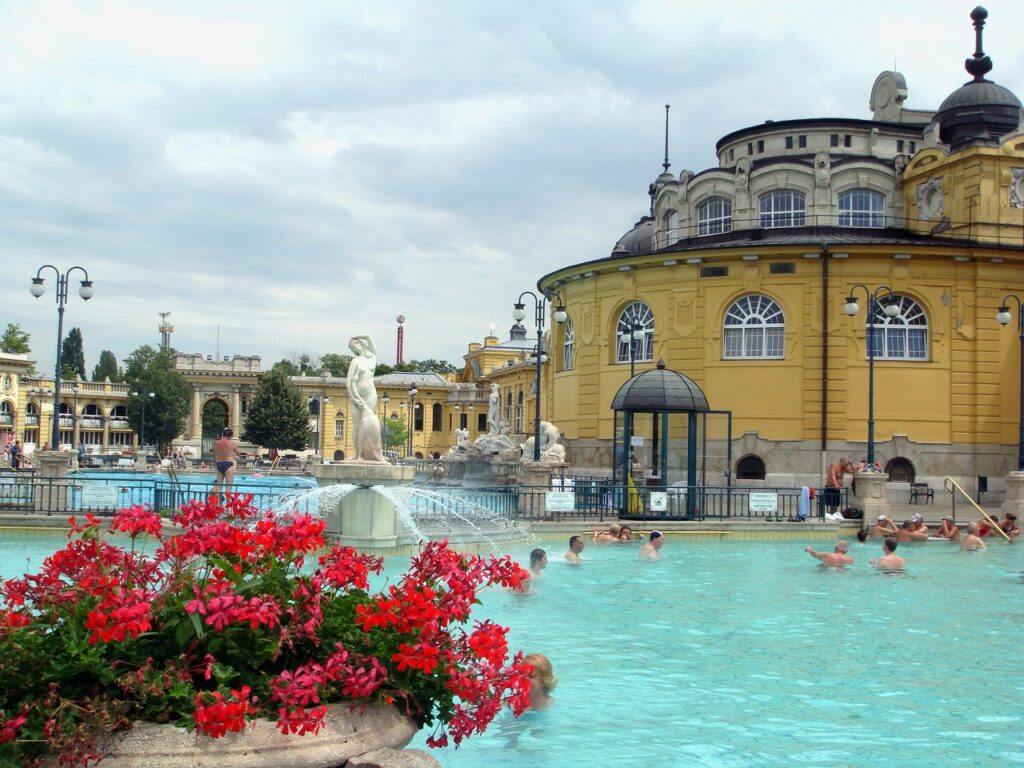The History and Culture of Public Baths in Budapest, visit 9-29-24
Budapest, Hungary is known as the “City of Baths” thanks to its multitude of thermal baths, an important part of Hungarian culture. There are many types of baths in Budapest including Roman baths (used as far back as 33 BCE), Ottoman baths, Austro-Hungarian baths and modern ones too. Budapest has more water hot springs than any other world capital, with as many as 1300 warming waters to immerse oneself in for therapeutic benefits. The Szechenyi Bath that I visited during my trip to Budapest is the largest medicinal bath in Europe, where the water contains sulfate, magnesium, calcium and bicarbonate, along with some metaboric acid and fluoride. This is one of the more modern baths in the city but is also the most popular and most expansive, and was built in 1913. The water is used for soaking, to absorb these minerals in the water, to heal muscles and joints and doctors send patients to heal and recover in baths like these. The geothermal springs are kept clean through a constant refilling and filtering. The swimming and cool waters are chlorinated, however.

The City also has many other popular baths including the 16th century, Rudas Baths at the base of Gellert Hill on the banks of the Danube River. If one continues up Gallert Hill, one will reach Gallert Baths which was built in 1918 in Art Nouveau Architecture. The Lukas Baths have been used since the 12th century, which because a healing space at the end of the 19th century. Many attestments on stone tablets within the spa assert that visitors have been cured by the healing waters.
Before the Ottoman rule in 1541-1699 the baths were established and bathing, which was valued by the Turkish culture rooted bathing culture in Hungary. Prior to this, the healing properties of the hot springs were mostly used to heal lepers or by Romans as part of cleansing and social interaction rooted in their culture.
I was amazed by how well set-up the whole facility and how large the facility was, I got my ticket and went through the gates to a dressing room then to an area to store my valuables and clothing in a locker. Then visitors enter a large bathing area where there are many different indoor baths that are each different temperatures as well as saunas and steam chambers. There was also a large area to wait and then receive Massage services. People can even get facials, receive aromatherapy or participate in a beer bath. The outdoor area has a large lap pool and is flanked on either side by thermal heated pools, one with a lazy river and fountain and the other hotter one used more for submersion/soaking exclusively. There is also a sunbathing area on the roof for sun worshipers. It’s also a common sight to see people playing a game of chess while bathing in the pool.

There are etiquette rules to be followed like bring a towel, wear flip flops, tie back your hair and be quiet but it appeared to me a bit to only be loosely followed as I did not think the visitors were quiet by any means. But I still found the Szecheyni Bath to be very enjoyable and a relaxing place to float all my worries away in the water. I would return to this and other Budapest baths in the future for sure, given the opportunity and would recommend them to all my friends and family. I live in Colorado and I am used to hot springs in Colorado (like the ones in Glenwood Springs or Pagosa Springs) being a little hotter than what I experienced in Budapest, but part of that may have been that since bathing is such a social thing and since people spend hours if not all day long in the bath pools, it may only make sense for them to not be so hot so you can spend longer relaxing and socializing and not get too dehydrated. Or it could be because they are regularly refilled to keep them ensure clean water quality.

The building is gorgeous with it’s Neo-Baroque style, yellow color and fluidity in form. The interior has a regal feel with regular marble columns, and arches and high or domed ceilings. The lobby entrance is very ornately decorated with frescoed domed ceilings, mosaic floors and mosaics on walls at arched niches where statues are located, which certainly gives you a grand feeling as you enter the baths. (Image above Alamy.com)
#bathsofbudapest #szcheyni